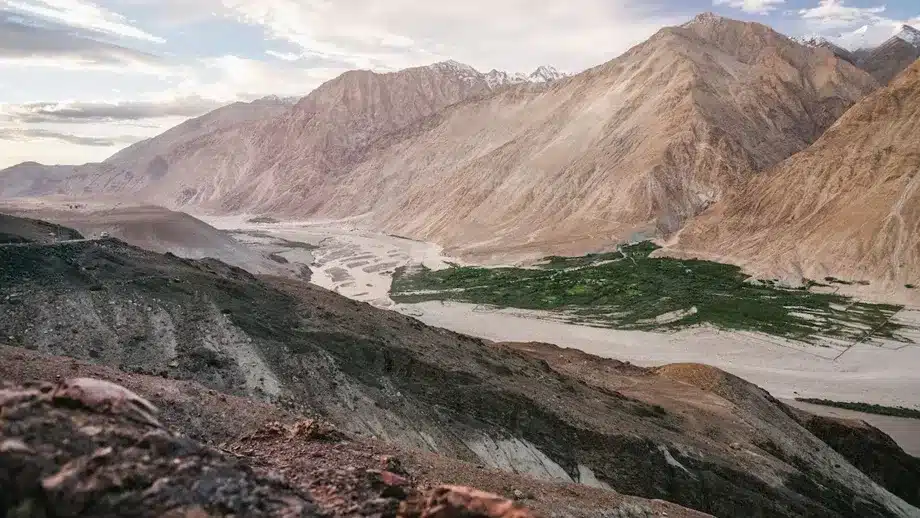About Magnetotactic bacteria:
- These are mostly prokaryotic organisms that arrange themselves along the earth’s magnetic field.
- These are present in freshwater and marine habitats.
- These organisms were believed to follow the magnetic field to reach places that had optimal oxygen concentration.
- These bacteria contained “novel structured particles, rich in iron” in small sacs that essentially worked as a compass.
- These magnetotactic bacteria create tiny crystals made of the iron-rich minerals magnetite or greigite. The crystals help them navigate the changing oxygen levels in the water body they reside in.
- It is believed that these microbes may represent some of Earth’s earliest inhabitants.
Highlights of the research
- Researchers are inspired by the similarities between the rock varnish in Ladakh and those observed on Mars by the Perseverance rover.
- They identified elevated concentrations of oxidized manganese (Mn4+) and carboxylic acid functionalities on the varnish surface, suggesting the presence of organic signatures.
- These findings indicate that the magnetic minerals in the rock varnish are likely biotic in origin.
- Significance: By detecting biotic signatures in rock varnish, scientists can better focus on identifying biosignatures on Mars and other celestial bodies.
- This information is crucial for future space missions, including those planned by ISRO and other space agencies, aiming to explore Mars and assess its habitability.
Q1: What is Magnetism?
It is the force exerted by magnets when they attract or repel each other. Magnetism is caused by the motion of electric charges. Every substance is made up of tiny units called atoms. Each atom has electrons, particles that carry electric charges.
Source: Ladakh’s rock varnish may help identify habitable environments in space
Last updated on June, 2025
→ UPSC Notification 2025 was released on 22nd January 2025.
→ UPSC Prelims Result 2025 is out now for the CSE held on 25 May 2025.
→ UPSC Prelims Question Paper 2025 and Unofficial Prelims Answer Key 2025 are available now.
→ UPSC Calendar 2026 is released on 15th May, 2025.
→ The UPSC Vacancy 2025 were released 1129, out of which 979 were for UPSC CSE and remaining 150 are for UPSC IFoS.
→ UPSC Mains 2025 will be conducted on 22nd August 2025.
→ UPSC Prelims 2026 will be conducted on 24th May, 2026 & UPSC Mains 2026 will be conducted on 21st August 2026.
→ The UPSC Selection Process is of 3 stages-Prelims, Mains and Interview.
→ UPSC Result 2024 is released with latest UPSC Marksheet 2024. Check Now!
→ UPSC Toppers List 2024 is released now. Shakti Dubey is UPSC AIR 1 2024 Topper.
→ Also check Best IAS Coaching in Delhi
























